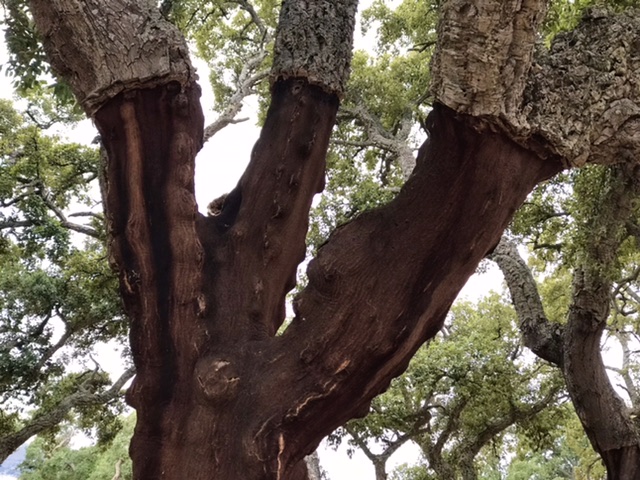Quercus suber or cork oak trees grow along the camino. They are an ancient source of wine bottle stoppers. Still used today, cork is also used for flooring, ball core, flotation devices, and lightweight soundproofing construction material. It is a space traveller too, used on components and parts in space ships. Cork bark harvested from the tree is stacked, dried, then processed further into cork products.
On the trail, I walk through forests, tree farms, and orchards featuring many species of trees. While I am walking, I try to identify as many as I can.
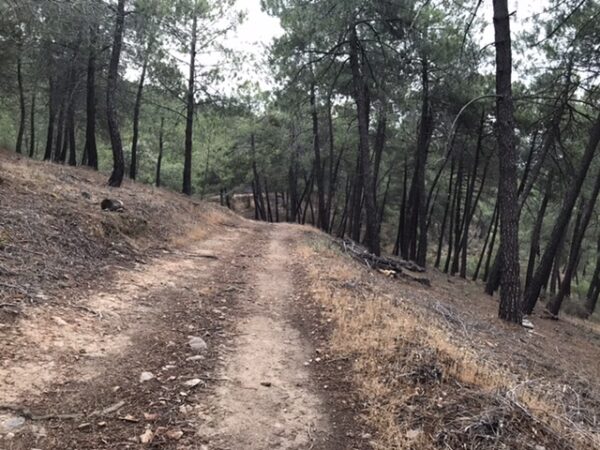
Trees on the camino
I’ve identified pine trees, palm, eucalyptus, oak, birch, nettle, olive, cherry, apple, pear, orange, lemon, almond, dogwood, and willow to name a few.
It is easy to determine the species of some trees by the fruit they bear. It is difficult if the fruit is very young and not yet developed. The bark or leaves may provide a clue.
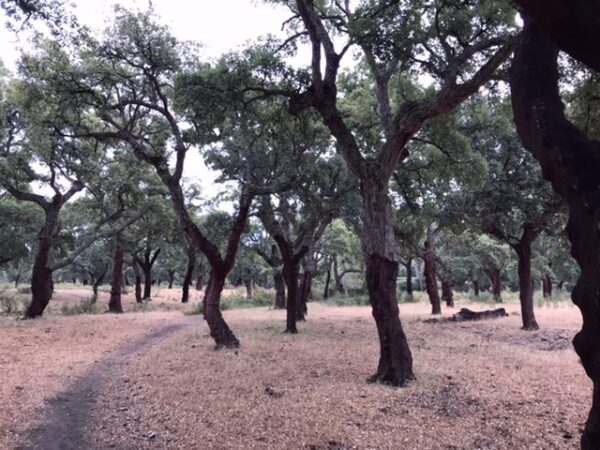
There was a stretch of trees that seemed to spring from nowhere. What are they? I never saw them before. They looked like partially shorn sheep. Where am I?
I was walking through a farm of cork trees
The cork tree is a member of the oak (Quercus) family. It starts as a tiny acorn (produced by the female flowers). Then it grows to be a “mighty” oak tree that is valued for its spongy bark. The trees can live up to 400 years.
They are drought-proof. The hot and dry weather in the areas in which they grow in Spain supports their needs. They grow on craggy ground which means that the best soil can be reserved for other plantings.
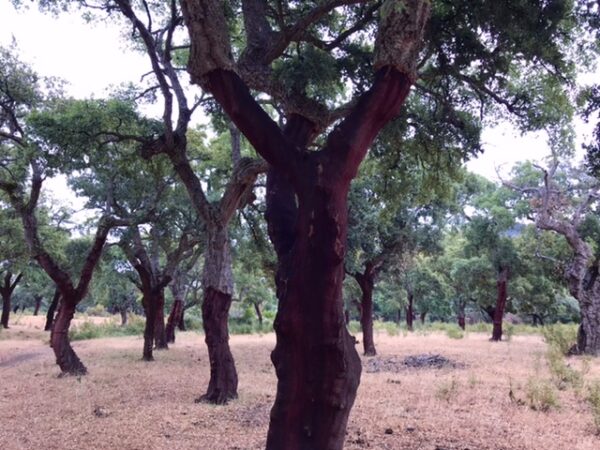
After the cork from a tree has been harvested, the trunk is reddish brown…
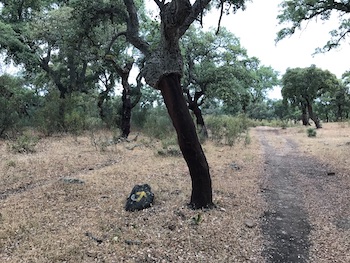
… but later it darkens considerably.
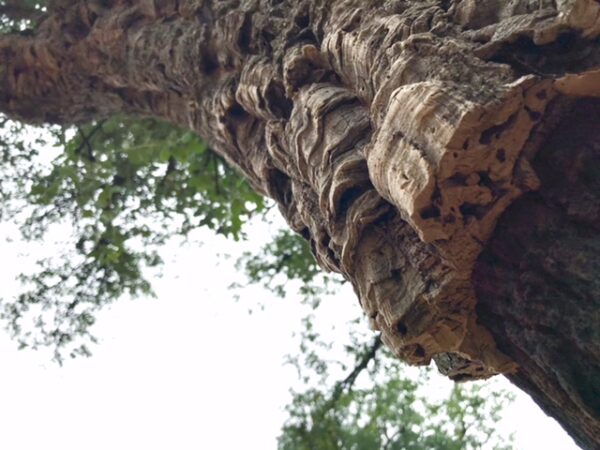
A few facts about Cork Trees
On a tree, there are male and female flowers. The male is 2- to 3-inch-long catkins. The female flowers are small, short, clusters of 2 to 4 in the leaf axils. They exist on the same tree and are dispersed by the wind.
The first harvest of virgin or male cork occurs after 25 or 30 years. Before that passage of time, it is not suitable for processing into viable cork. Another nine years, the bark grows back on the trunk, but the trees still do not yield anything worth using commercially.
Nine growing years later and every nine year interval after, the cork grows into its desirability. These later cuttings are referred to as female cork and considered to be of higher quality.
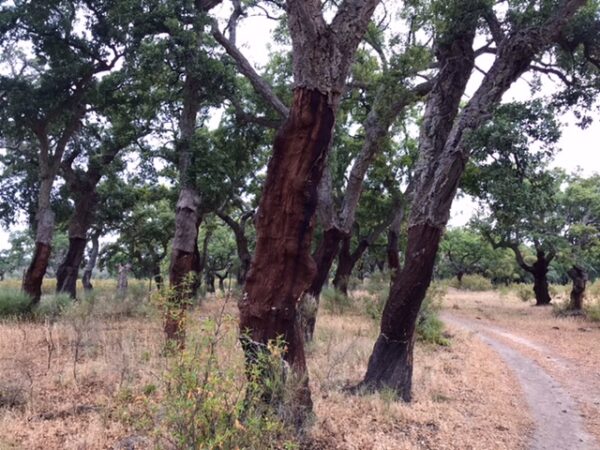
Up to 12 harvests can be made within a cork tree’s lifetime, thus it is a renewable source for human use. Before and for much longer after its harvest life, a cork tree farm provides a habitat for birds and animals.
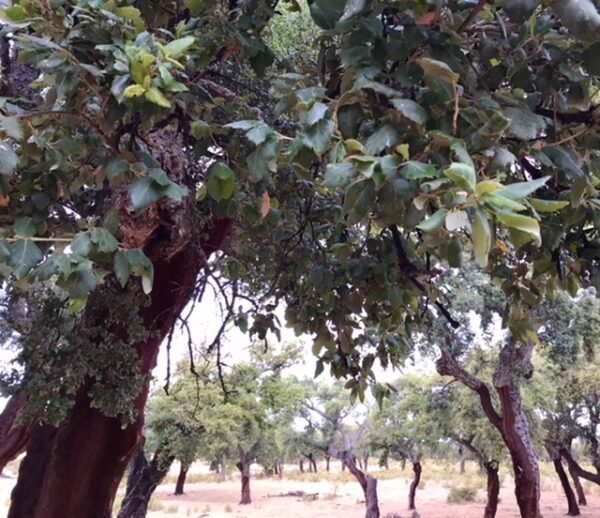
Like other oaks, these cork trees are resilient and strong. The cork padded bark protects them from extreme heat and fire. That fact is poignantly clear in this summer’s heat. It is, however, susceptible to a bacterium that causes cork stoppers to affect wine and make it taste bad.
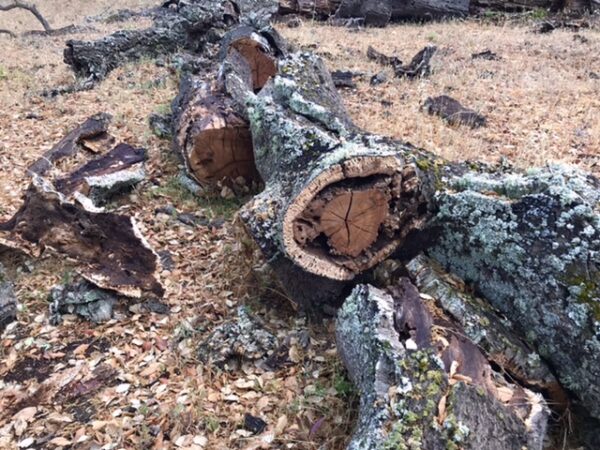
Survival of the fittest
Eventually, the tree outlives its usefulness to humans when it cannot grow harvestable cork. Increasingly, cork is being replaced with plastic bottle stoppers and metal screw tops. As the use of these alternative stoppers grows, cork tree forests may have to be cut down and replaced with more profitable crops and trees. This will have a negative impact on the birds and animals in these forests.
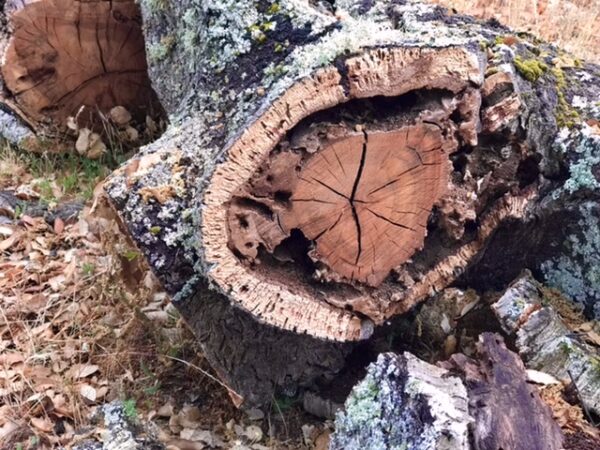
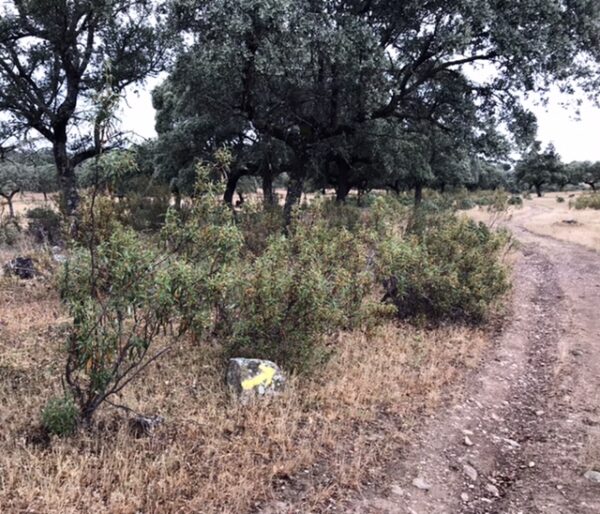
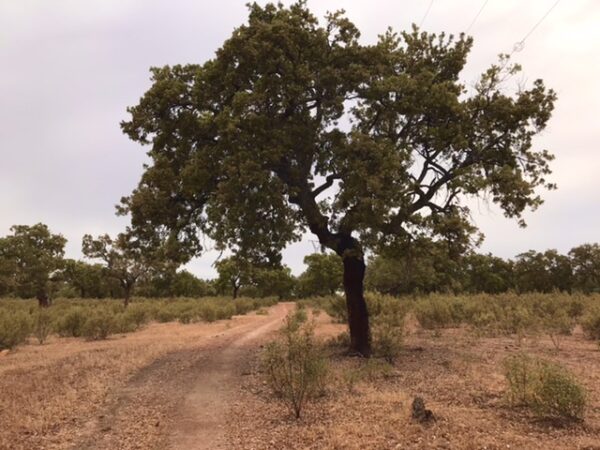
Celebrate everything
Why write about this trek through this farm? It brought to mind the occasions that we might see a cork stopper – birthdays, weddings, anniversaries, divorces, New Year’s celebrations, graduations, promotions, funerals, or completion of a long, life changing pilgrimage – anything that marks those measures of life.
On the camino, whether it is the menu del dia, pilgrim’s menu*** or the rest of the menu, wine is offered or on hand.
For now, cork stoppers remain familiar hallmarks of a good bottle of wine and a proper celebration!
Until the day that you cannot… enjoy life.
… come celebrate
with me that everyday
something has tried to kill me
and has failed.
– Lucille Clifton**
I am continuing on the Way to Santiago de Compostela.
____
Baadaye and Buen camino
Shirley J 🌹
____
** Excerpt from poem – “won’t you celebrate with me” from The Book of Light. Copyright © 1993 by Lucille Clifton, Copper Canyon Press
*** prix fixe meals consisting of several courses served at a total fixed price, including dessert and beverage.
This and several posts this summer chronicle my pilgrimage in Spain where I am walking the 1400 kilometer-long camino Mozárabe and now the Via de la Plata to Santiago de Compostela. Read my announcement here.

